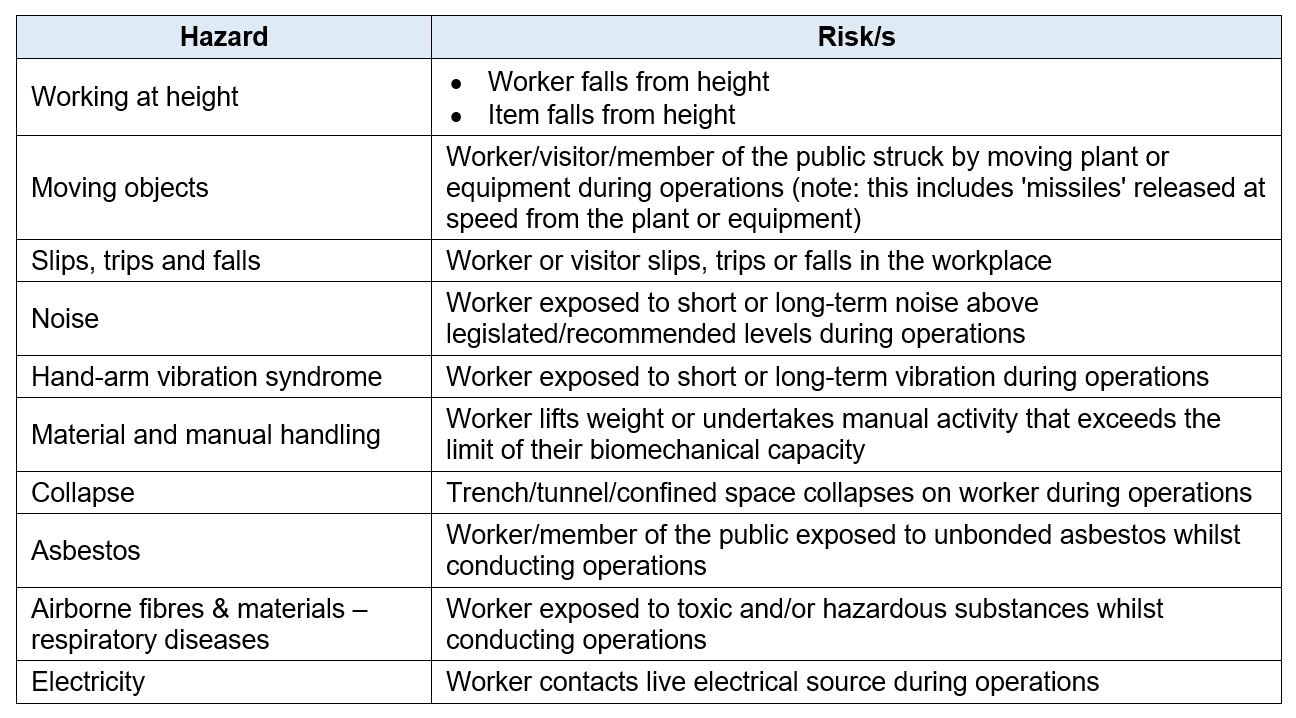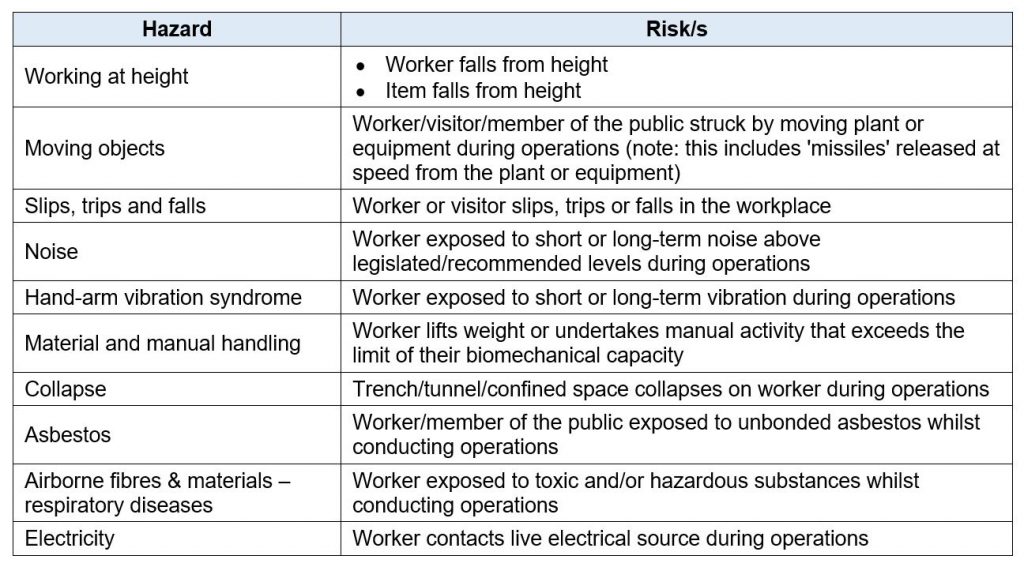
Crazy Stuff in the Workplace Health and Safety Codes of Practice
Part 2
In part one of this series I discussed the crazy stuff in the Model Code of Practice for Managing the risk of falls from heights.
As it is coming up to Christmas, as a special gift, in this blog I will look at two crazy things in the Safety Codes of Practice, both of which come from the Code of Practice: How to Manage Work Health and Safety Risks. They are:
- the definition of a risk; and
- the sample risk register.
Definition
The Code of Practice defines a risk as:
the possibility that harm (death, injury or illness) might occur when exposed to a hazard[1].
This definition is focussed purely on the likelihood of harm that may come from exposure to a hazard. It does not even consider the likelihood of the event occurring – just the likelihood of harm if there is exposure to the hazard. What this definition is implying is that the exposure has already occurred (i.e. the risk has materialised) and what we are assessing is the possibility that harm will occur.
So, let’s look at this in a more practical way, it’s defining a risk as:
- The possibility someone will get hypothermia if exposed to cold conditions; or
- The possibility someone will be injured if struck by a moving vehicle; or
- The possibility that someone will suffer serious injuries or death if falling from heights.
Of course, if we define a risk like this, we are going to get very skewed risk levels as the likelihood (possibility) of harm is always going to be high if we are assuming the exposure (risk) has already occurred.
If we compare the Code of Practice definition with the definition I have shared in previous blogs, we can see that the emphasis is more towards that which is most important:
stopping the event that may lead to the harm
That is, the exposure to cold conditions; the vehicle hitting a person; or the person falling from heights:
In my definition we are focussed on the event and its likelihood, rather than the likelihood of harm as detailed in the Code of Practice definition. If you are focussed on the likelihood of harm as opposed to the likelihood of the event that could lead to the harm, the management of the risk is problematic, if not impossible.
As an aside, what I find fascinating is the fact that the Work Health and Safety Act 2011 mentions the word risk 79 times and yet does not define what a risk is. It also mentions the word hazard 28 times and, once again, does not define the term. Seems to me they are pretty important terms to define in the Legislation that is aimed at reducing workplace health and safety risk through the minimisation of hazards.
The ‘Risk Register’
Before I explain why the current Code of Practice’s ‘risk register’ format is fundamentally flawed, I have to bring up a topic I have covered previously – hazard vs risk.
A quick search of the internet and it becomes obvious that there is significant confusion in relation to the difference between a hazard and a risk. One article highlights that the following are the top 10 safety ‘risks’ in the construction industry:
- Working at height
- Moving objects
- Slips, trips and falls
- Noise
- Hand-arm vibration syndrome
- Material and manual handling
- Collapse
- Asbestos
- Airborne fibres & materials – respiratory diseases
- Electricity[1]
Only
one of these (slip, trip and fall) is a risk. The majority are hazards, and one
of them (respiratory diseases) is a consequence.
If we take the hazards listed above, and describe them as risks, our potential for them to be managed more effectively is increased considerably.

We are now able to determine the likelihood of the event (e.g. worker falls from heights), given the current controls and their effectiveness, and the consequence should the event occur.
But here is where the craziness kicks in in the Code of Practice.
One need only look at the example risk register provided in the Code of Practice to see how those conducting ‘safety risk assessments’ could be misled into believing a hazard is the same as a risk.

In this register, a hazard is identified. It then requires the person filling out the form to identify the harm that might come from the hazard and the likelihood of the harm to then determine the level of risk. The problem is, no risk has been identified – just a hazard.
So, if we use one of the previous examples: electricity, we can see the problems starting to emerge. Electricity is a thing: it is a hazard. What this form is asking us to do is to develop a level of risk for electricity. It is simply not possible.
I have completed it below to show how ludicrous it is:

Yes folks – you are correct – we have an Extreme Risk of Electricity.
Kind of reminds me of the time I reviewed a risk register for an organisation that had listed a risk as: ladder. They had assessed the likelihood as Almost Certain and the consequence as Severe, meaning they had an Extreme risk of ladder. Of course, what they were trying to articulate was a risk: worker falls from a ladder which could be rolled up to be incorporated into the risk: worker falls from heights.
If on the other hand, we were to capture the risk: worker contacts or is contacted by live electrical source, we can assess the effectiveness of the controls to determine how likely it is that the worker will contact the live electrical source and, based on the knowledge of the task and the strength of the current, an assessment can be made in terms of the most plausible consequence.
It would look something like this:

We now have a very different view because we are determining the risk that someone will contact the live electrical source – not the crazy circumstance of developing a risk assessment for electricity.
Stay tuned for the next instalment. Trust me, there is enough crazy stuff in there to ensure a monthly blog for the next few years.
[1] SafeWork Australia, Code of Practice: How to Manage Work Health and Safety Risks, December 2011, p4.
[2] http://blog.papertrail.io/construction-safety-risks/#.WoQJO6iWY2w
